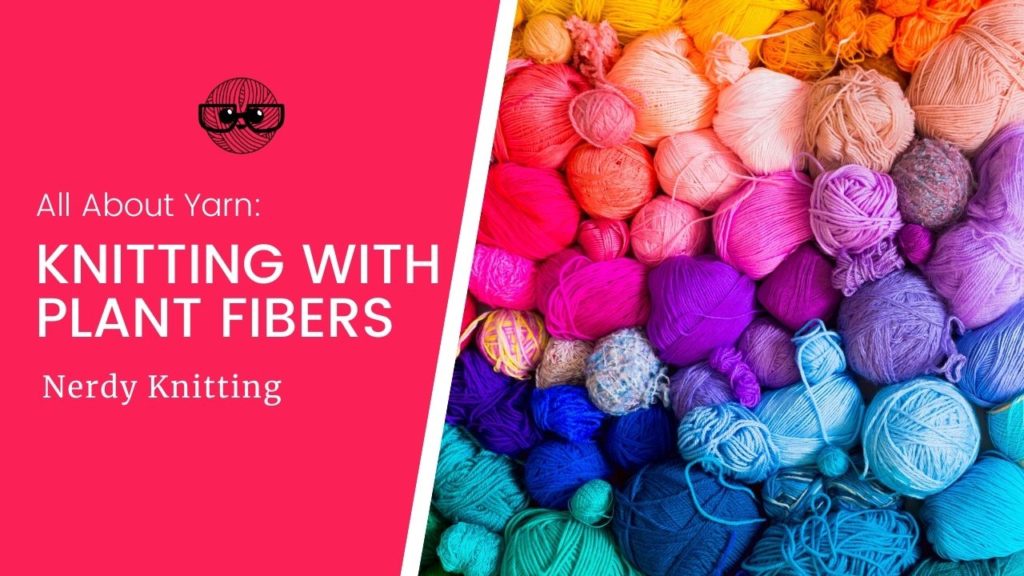Plant fibers make great yarns. While wool and other animal fibers are great insulators and perfect for cold weather, knitting with plant-based yarns is perfect for warm weather when you want something light and breathable.
But they do have some drawbacks that need to be taken into consideration before you start knitting with them. In this article we’ll take a look at the advantages of knitting with plant yarns as well as their disadvantages (and when you’d want to avoid using them). We’ll also discuss:
- History of Plant Fibers for Fabric
- Properties of Plant Fibers
- Knitting with Plant Fibers
- Choosing the Right Knitting Patterns
- A Closer Look at Different Plant Fiber Yarns
Let’s take a closer look at plant fiber yarns for knitting – a bit of history, their properties, how they are to knit with, when you’d want to use them and when you’d want to avoid them.
Some links below are affiliate links. If you click through and make a purchase I may receive a small commission at no extra cost to you. See the disclosure policy for more information.
The History of Plant Fibers for Fabric
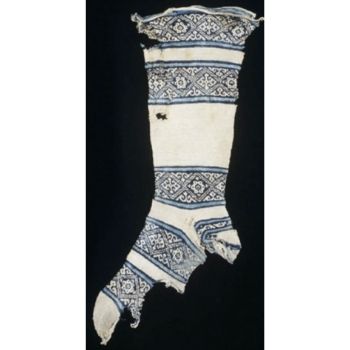
Plant fibers have been used to create fabrics throughout history. Because of their natural tendency to deteriorate and decompose over time, there aren’t lots of historical artifacts but there are enough to get a good idea of life in the distant past and how fabrics were created.
Cotton is one of the oldest plant fibers used for fabric and for knitting. The cotton stocking pictured here was discovered in Egypt in the 12th century. It was knit from the toe up to the leg. The heel was added afterwards – perhaps it was the first afterthought heel?
Linen, which comes from the flax plant, is another commonly used source of fabric throughout history. Fragments dating from 8000 BC offer a glimpse into how it was used in ancient times and some fibers found in a prehistoric cave provide evidence that it may have been used for fabric even further into the past (pictured below).
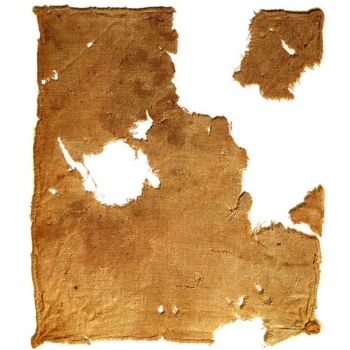
Even hemp has been used as a fabrics dating as far back as 800 BC in Asia, where hemp fabric was common for everyday use. Along with fabric, it was also used to make rope, twine, sandals, shoes, and even shrouds.
Along with these three plant fiber sources, more recent fibers have been created because of more modern manufacturing processes. Yarns such as bamboo, rayon (which is derived from wood pulp), corn, seaweed, and even milk are now available because of synthetic processing techniques. Because they are natural sources but require more of a synthetic process (involving chemical extraction), they fall within their own category – biosynthetic fibers.
Properties of Plant Fiber Yarns
Yarn fibers can be divided into four broad categories – animal fibers (like wool, silk, and alpaca), plant fibers (like cotton and linen), biosynthetic fibers (like rayon and bamboo), and synthetic fibers (like acrylic and nylon).
The plant fibers we’ll look at fall within two categories – plant fibers that require some processing to turn into useable fiber for knitting and biosynthetic fibers – which are also natural plant fibers but require more processing to become useable fibers for yarn.
All of these plant fibers, no matter the processing techniques, share some of the same basic characteristics – both positive and negative.
Advantages of Knitting with Plant Fibers
Plant fibers have some great positive characteristics that make it wonderful for knitting. They are:
- Breathable
- Moisture wicking
- Strong and/or durable
- Have good drape
All of these factors make plant fiber yarns perfect for warm summer weather. When you’re ready to put those heavy wool sweaters away, it’s time to pull out those cotton and linen tanks and tees.
While this is a general list of the various characteristics found in plant-based yarns, each fiber has their own natural traits and these advantages are present to varying degrees. To learn more about each fiber, you’ll find more information about them below.
Disadvantages of Knitting with Plant Fibers
There are some clear advantages to using plant fibers for knitting – they are breathable and moisture wicking (and each plant fiber also has their own distinct advantages) but there are two things that make them difficult to work with. Plant fibers are heavy and inelastic and this affects your finished knitted project in a few ways.
The inelastic nature of the yarn makes it harder on the hands while knitting since there is very little ‘give’ to the yarn. This also affects how even the final knit fabric looks. Inelastic yarns show all your tension issues and inconsistencies.
The heavy nature of plant fibers also affects the final project and can make your garment sag and droop from the weight of the fiber itself.
While these are disadvantages, they aren’t insurmountable. You’ll just want to keep them in mind when choosing appropriate knitting projects and patterns.
Knitting with Plant Fibers
As stated above, the inelastic nature of plant fibers can make them hard on the hands while you’re knitting and it also affects the final garment – it will show all your tension issues.
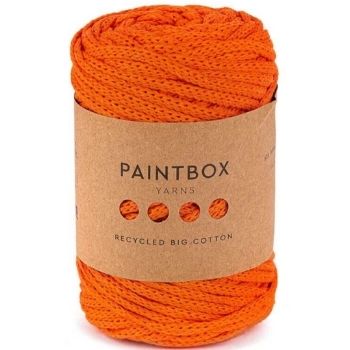
But plant fibers can also be really nice to knit with if they are blended together or with other fibers. Cotton and bamboo can both feel lovely and soft while knitting, even if they are inelastic. And while linen and hemp can feel rough on the hands, they soften with washing and add lovely drape to your finished garment.
Plant fibers come in a great variety of blends that highlight their advantages and can help reduce their disadvantages. Wool blended with plant fibers provides some elasticity and reduces the weight of the yarn (because wool is lighter than plant fibers). Blending various plant fibers together can also make soft, strong, and durable yarns that are great to work with.
There are also some construction methods that help lighten the natural weight of plant fibers. A chainette yarn (like the yarn pictured), which is basically an I-cord, changes the standard structure of plying yarns together and makes a lighter yarn – which is a good thing for plant fibers.
Get the Yarn Substitution Checklist
Fill in the form below to get a free copy of the Four Step Checklist for substituting yarn. Use it for your next knitting project!
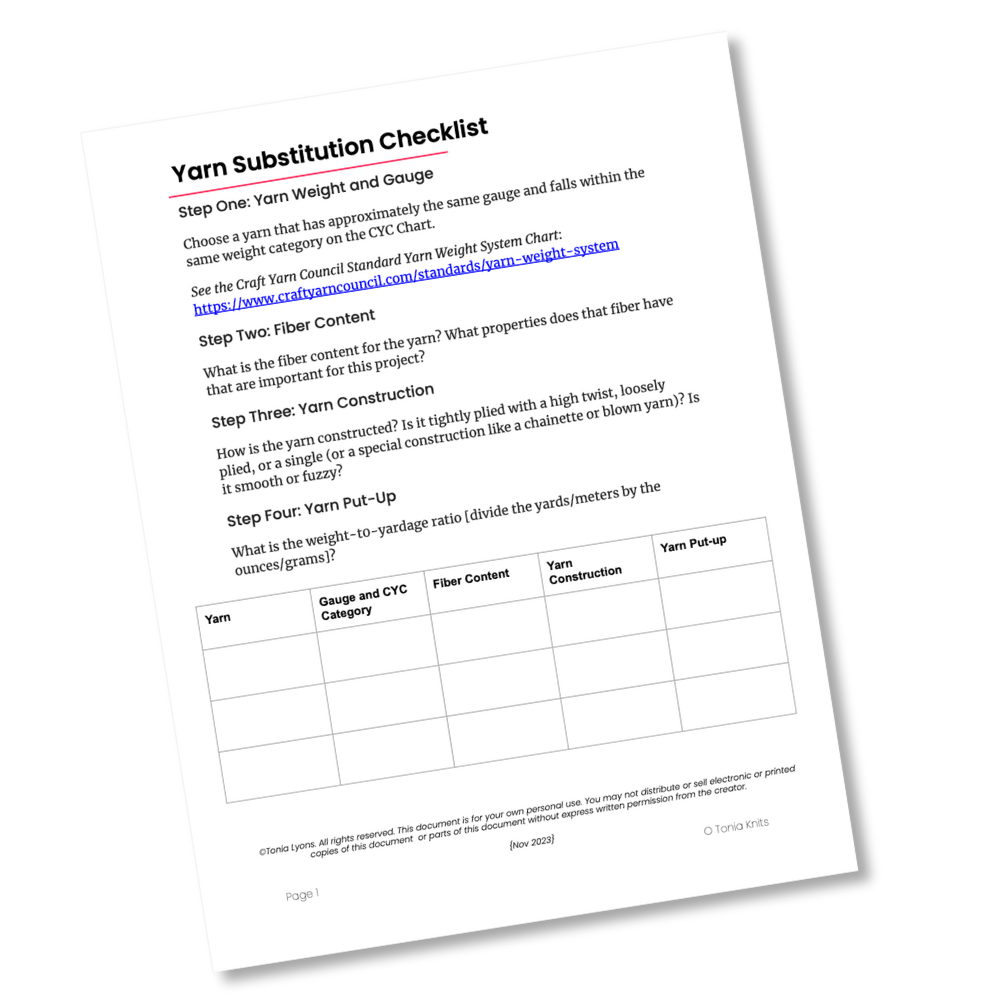
Choosing the Right Knitting Patterns
There are plenty of things you can knit with plant-based yarns and yarn blends but it’s not always a suitable choice for every project.
The simplest thing to do is look for knitting patterns that used plant-based yarns when knitting the sample for the design. The designer took the natural tendencies of plant fibers into consideration when designing the pattern.
One great thing about plant fibers is that they are often interchangeable. If a pattern calls for a linen-based yarn, you could probably substitute a bamboo yarn and it would work just fine.
You do want to avoid a few things – specifically highly textured garments (especially cables) – if you’re using a 100% plant-based yarn. It will be hard to knit (that inelastic nature of plant fibers makes them hard to work with) and the fabric will highlight all the unevenness of the yarn and any tension issues. Animal fibers added to a blend can help as they add some elasticity and will help even out those tension issues.
For most plant-based yarns, these types of patterns are good choices:
- summer tops, tanks and tees
- light cardigans
- summer shawls and wraps
- placemats and coasters
- dishcloths, washcloths, and hand towels (for absorbent yarns like cotton, bamboo, and hemp)
- kid & baby items (if the yarn is soft and easy care like cotton or bamboo)
A Closer Look at Different Plant Fiber Yarns
There are many different plant-based yarns you can use in your knitting projects. If you want to learn more about knitting with a particular plant fiber, this section covers some of the more common plant fibers you’ll find in yarns and yarn blends.
Linen Yarn
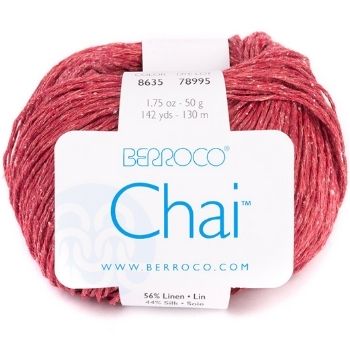
Linen is a great yarn for knitting. It does have some drawbacks – the fiber can be stiff and hard to work with. But, after it’s been washed a few times, linen starts to soften and has beautiful drape. It’s great for lightweight summer tops.
Learn more about knitting with linen yarn (including history, specific properties, selecting patterns, and some recommended yarns).
Cotton Yarn
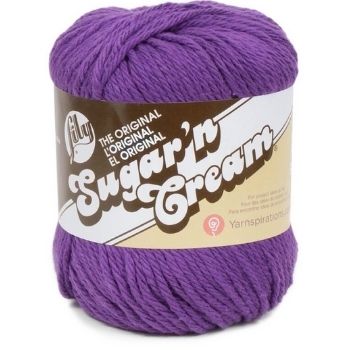
Cotton is a popular fiber for knitting – with good reason. It’s versatile – it can be used for soft baby garments or light summer tops. It’s absorbent – making it a great choice for dishcloths and washcloths. And it’s usually very easy to care for – many cotton-based yarns are machine washable.
Learn more about knitting with cotton yarn (covering historical information, advantages & disadvantages, pattern choices, and yarn recommendations).
Bamboo Yarn
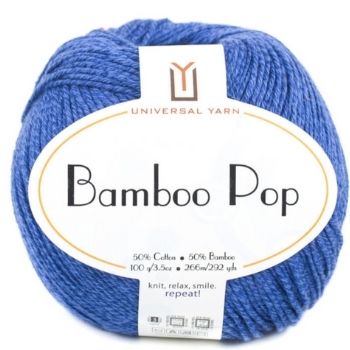
Bamboo is one of the newer yarns and falls within the biosynthetic category of yarns as it’s a natural product but needs heavy processing to extract the useable fibers and create the yarn. It’s a renewable resource and doesn’t use heavy pesticides and fertilizers so it can be a better environmental choice. It’s also soft and certain yarns have a beautiful sheen. And, it’s often found in washable blends, making it a good choice for kids and baby garments.
Learn more about knitting with bamboo yarn (including a look at rayon and other types of biosynthetic yarns, specific properties, choosing patterns, and some yarn shopping recommendations).
Hemp Yarn
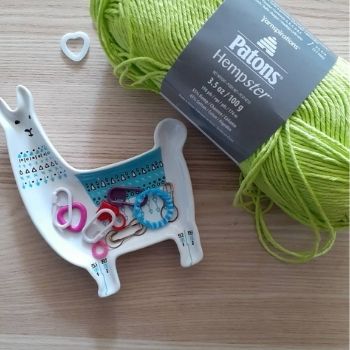
Hemp has actually been used for fabric since ancient times in China but it’s not a common option for knitters. But, there are some options for hemp yarn and it can be a great choice for the right type of project. A 100% hemp yarn is great for market bags where you want something strong and sturdy.
Learn more about knitting with hemp yarn (including its interesting history, properties specific to hemp yarn, patterns appropriate for the yarn, and a few yarns that include hemp).
More Questions About Plant Based Yarns & Fibers
Here are a few more questions and answers that people commonly have about knitting with plant fiber yarns.
How do you extract fibers from plants?
Plant matter can be extracted through a mechanical process, a chemical process, or soaking (called ‘retting’). Cotton is picked and processed mechanically, linen and hemp are soaked using the retting process, bamboo and other wood materials use a chemical process to extract the plant cellulose.
What does retting mean?
Retting is the soaking process that’s used to extract cellulose fibers from the stalk of a plant like linen is derived from flax. The stalks are soaked and allowed to rot and break down (or a chemical process is used instead). After the stalk has soaked, it’s ‘heckled’ – beaten to remove the woody parts and release the fibers that can then be spun into useable yarns.
What is vegan yarn?
Vegans don’t eat or use anything that comes from animals – including yarn. So plant-based yarns are a great choice for vegan knitters. Instead of wool, silk, or other animal fibers, plant fibers like cotton, linen, hemp, and bamboo are natural plant sources that can be used for knitting. As well as natural plant fibers, synthetic yarns like acrylic are also an option for vegan knitters.
More About Plant Based Yarns & Fibers
- The Knitter’s Book of Yarn by Clara Parkes (available at Amazon)
- Yarn Substitution Made Easy by Carol J. Sulcoski (available at Amazon)
- Knits from the Greenhouse by Cornelia Bartlette (available at Amazon)
- Yarn Garden: 30 Knits Using Plant-Based Fibers by J. Marsha Michler (available on Amazon)
Related Knitting Articles
- 12 Affordable Sock Yarns for Knitting
- 12 Affordable (100% Wool) Yarns for Knitters
- A Beginner’s Guide to Yarn Substitution
